Blog & Latest Updates
Fly Fishing Articles
Insects by Common Name


Underwater Pictures from Trout Streams, Page 4
Browse through all the underwater photos on this site below, or pick a category on the right.
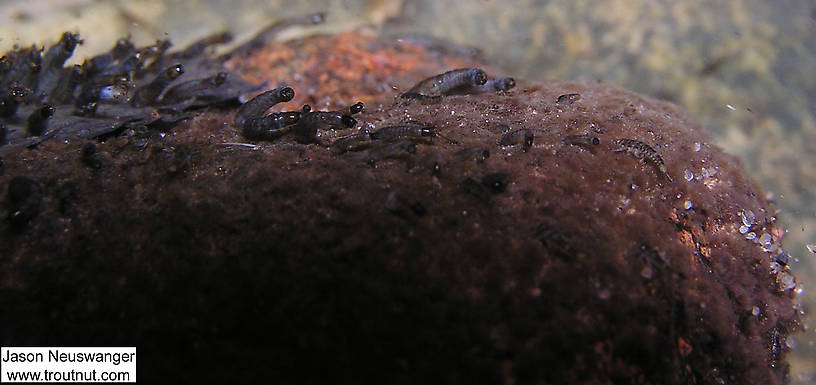
This is my favorite underwater picture so far. It shows a bunch of Simuliidae (black fly) larvae clinging to a rock and swinging in the fast current. There are also at least four visible mayfly nymphs, probably in the family Baetidae.
In this picture: True Fly Family Simuliidae (Black Flies) and Mayfly Family Baetidae (Blue-Winged Olives).
In this picture: True Fly Family Simuliidae (Black Flies) and Mayfly Family Baetidae (Blue-Winged Olives).
StateWisconsin
LocationEighteenmile Creek
Date TakenMar 19, 2004
Date AddedJan 25, 2006
AuthorTroutnut
CameraOlympus C740UZ
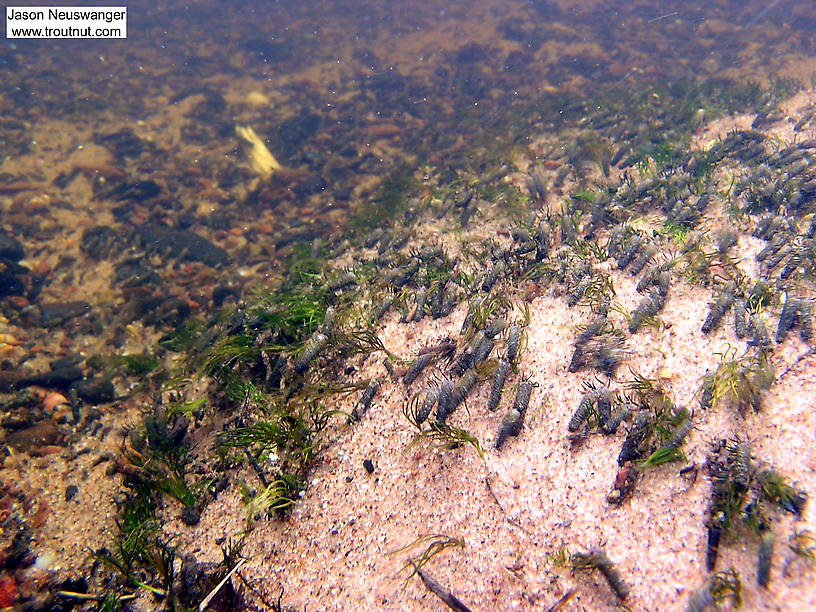
Cased caddis larvae blanket this section of stream bottom.
In this picture: Insect Order Trichoptera (Caddisflies).
In this picture: Insect Order Trichoptera (Caddisflies).
StateWisconsin
LocationEighteenmile Creek
Date TakenApr 14, 2004
Date AddedJan 25, 2006
AuthorTroutnut
CameraOlympus C740UZ
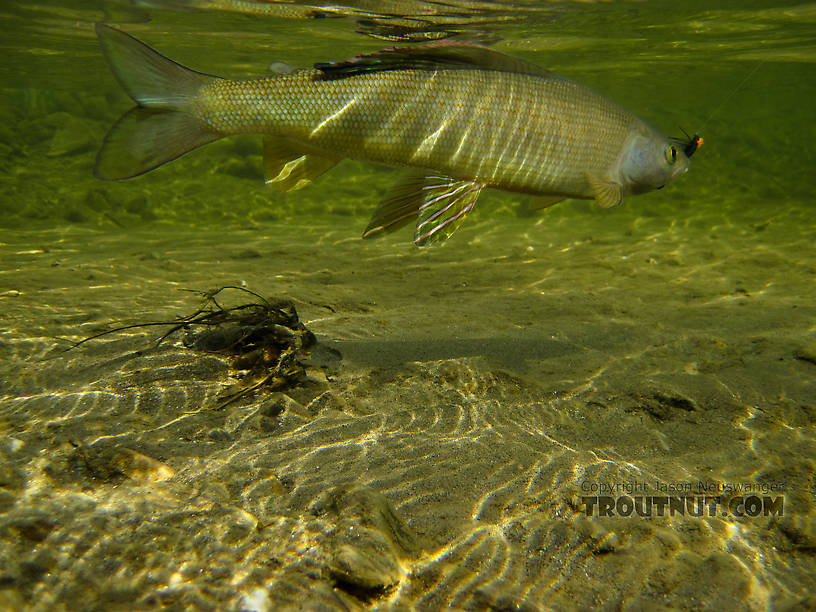
This simple rubber-legged foam beetle is one of my favorite flies for Arctic grayling. It's quick to tie so I don't mind losing one or two on snags. It's durable, so one fly can last a hundred fish or more. It never needs floatant to ride the surface well. Most importantly, it catches fish, although grayling often hit almost anything. The bold profile and attention-grabbing plop of the beetle, I think, draw fish from farther away than a more subtle fly might, and it often draws unusually savage strikes.
StateAlaska
LocationChatanika River
Date TakenAug 6, 2011
Date AddedAug 7, 2011
AuthorTroutnut
CameraCanon PowerShot D10
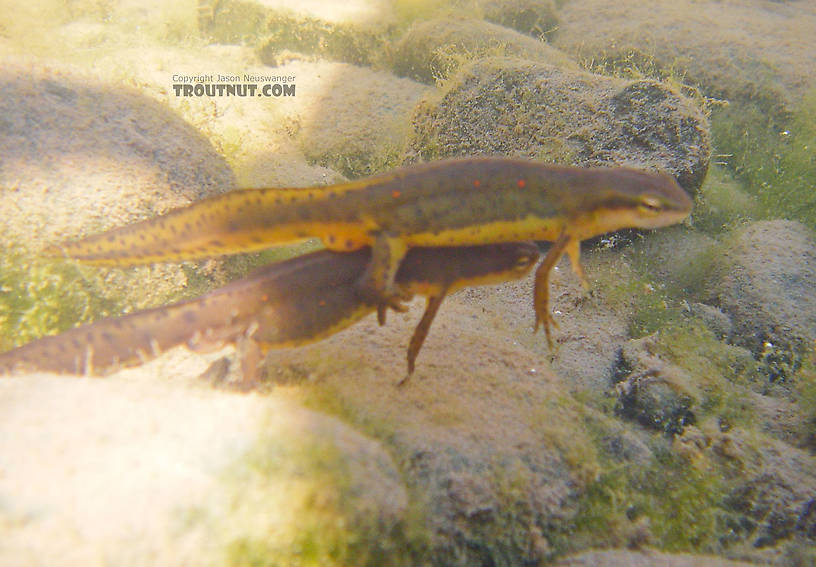
These are red-spotted newts, Notophthalmus viridescens viridescens. Thanks Gonzo for the ID.
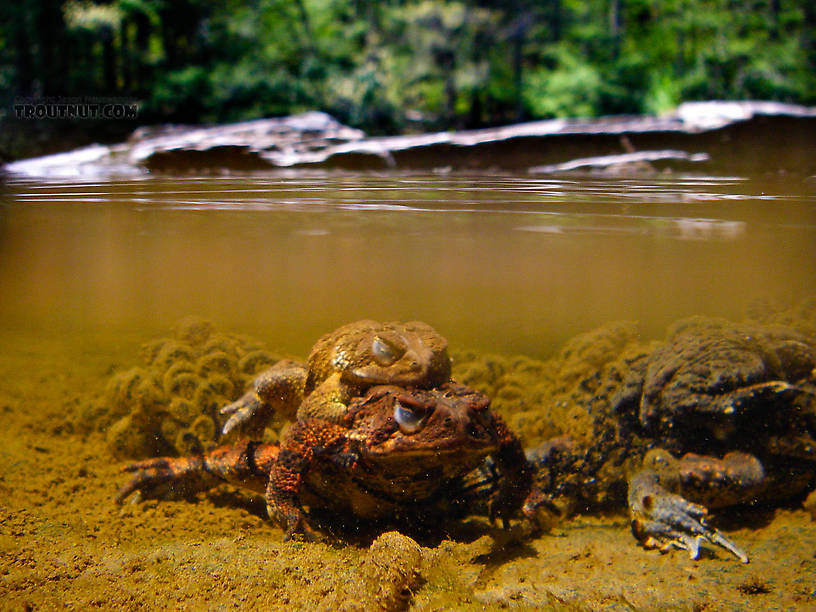
Mating toads and their eggs in the shallows.
StateNew York
LocationNeversink River Gorge
Date TakenMay 12, 2007
Date AddedJun 5, 2007
AuthorTroutnut
CameraPENTAX Optio WPi
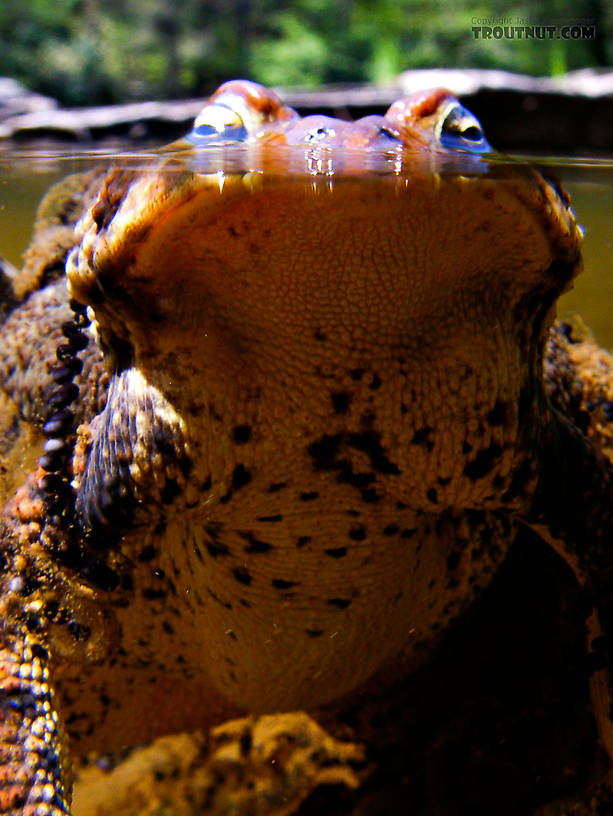
Mating toads.
StateNew York
LocationNeversink River Gorge
Date TakenMay 12, 2007
Date AddedJun 5, 2007
AuthorTroutnut
CameraPENTAX Optio WPi
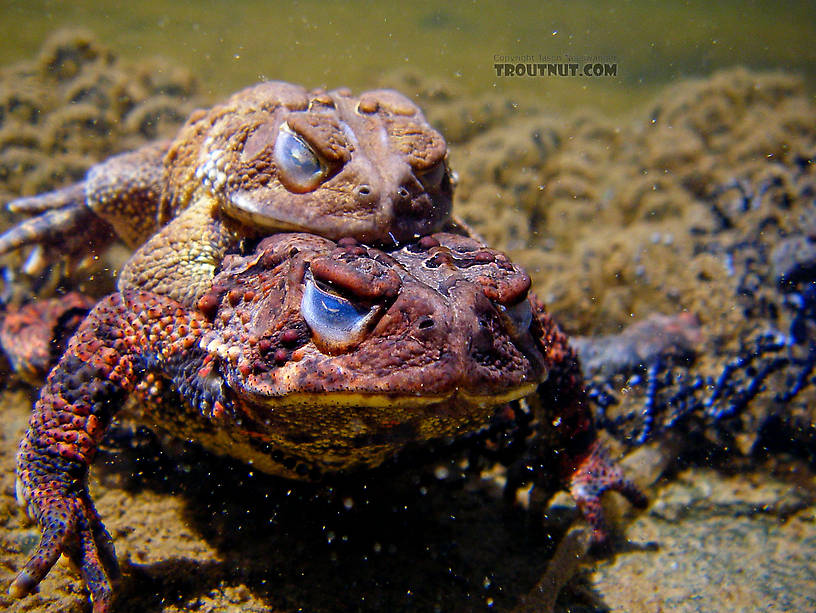
Mating toads, with a huge number of eggs stretching out behind them.
StateNew York
LocationNeversink River Gorge
Date TakenMay 12, 2007
Date AddedJun 5, 2007
AuthorTroutnut
CameraPENTAX Optio WPi
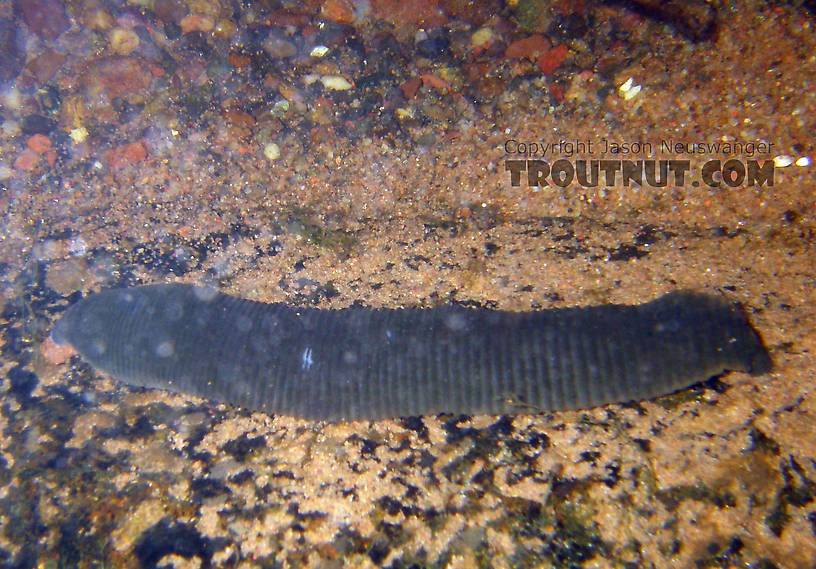
I spotted this very large leech freely tumbling, and occasionally stopping, along the bottom of a clear, cool trout stream. I paid careful attention later and spotted two more like it, but this one was the largest -- probably over 7 inches stretched out.
There is one other picture of it.
In this picture: Animal Class Clitellata-Hirudinae (Leeches).
There is one other picture of it.
In this picture: Animal Class Clitellata-Hirudinae (Leeches).
StateWisconsin
LocationNamekagon River
Date TakenJun 21, 2006
Date AddedJul 1, 2006
AuthorTroutnut
CameraPENTAX Optio WPi
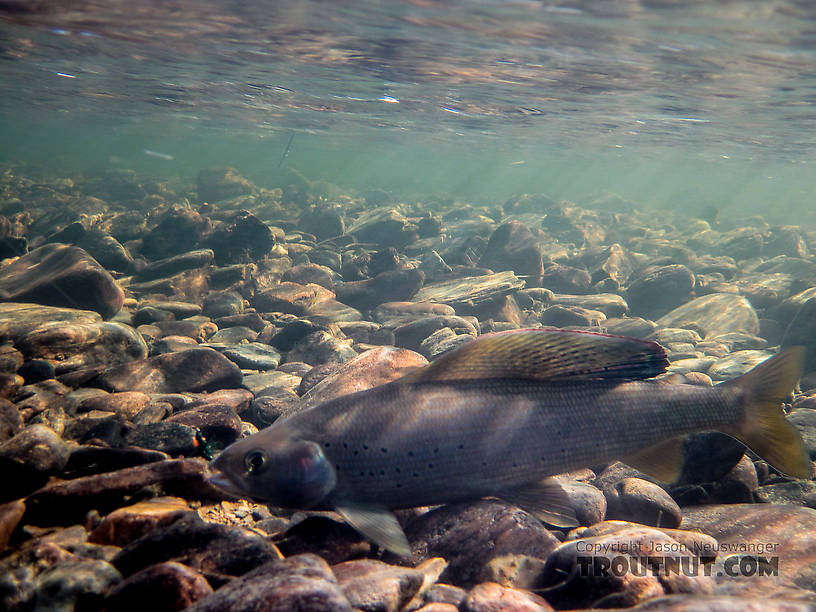
StateAlaska
LocationNome Creek
Date TakenJun 22, 2013
Date AddedJun 23, 2013
AuthorTroutnut
CameraCanon PowerShot D10
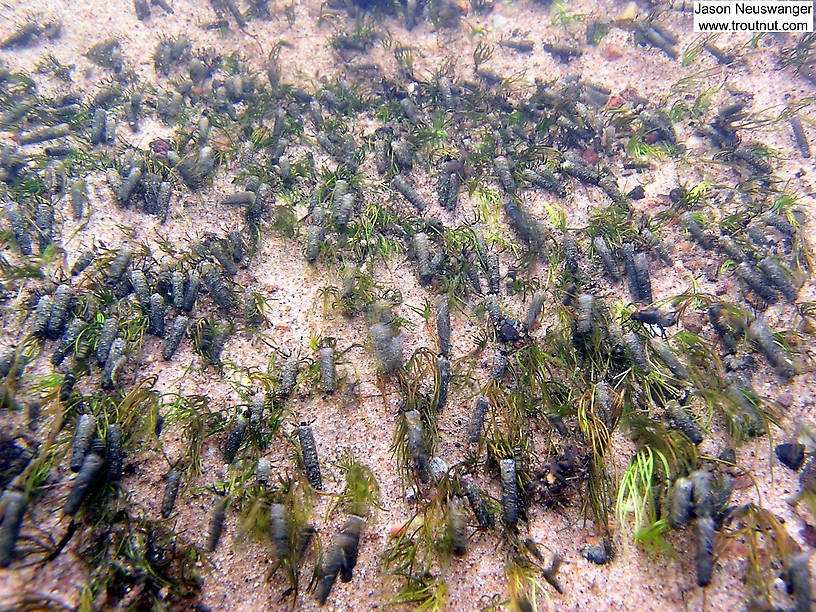
Hundreds of cased caddis larvae cling to sparse weed growth in the sand under heavy current.
In this picture: Insect Order Trichoptera (Caddisflies).
In this picture: Insect Order Trichoptera (Caddisflies).
StateWisconsin
LocationEighteenmile Creek
Date TakenApr 14, 2004
Date AddedJan 25, 2006
AuthorTroutnut
CameraOlympus C740UZ
Top 10 Fly Hatches
Top Gift Shop Designs
Eat mayflies.
Top Insect Specimens
Miscellaneous Sites
Troutnut.com is copyright © 2004-2024 Jason
Neuswanger (email Jason). See my FAQ for information about use of my images.
 privacy policy
privacy policy
